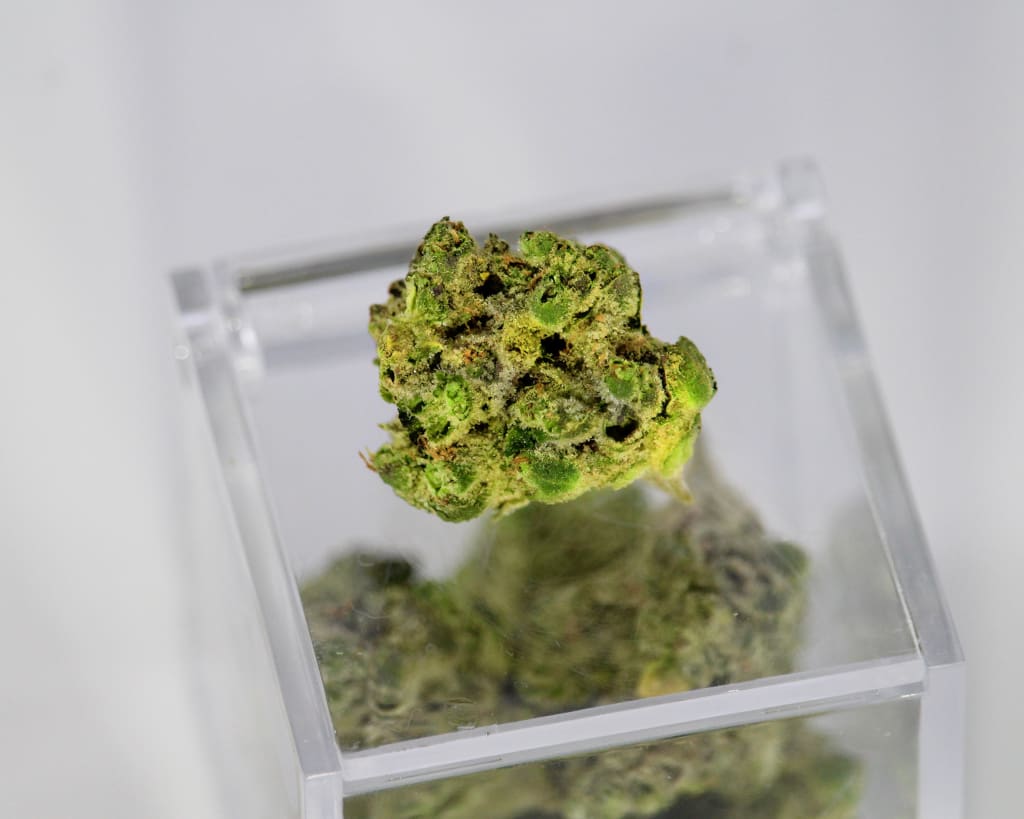Fragrant terpenes in cannabis packed with medicinal qualities
How the differing smells reveal different medicinal properties of weed

The other day I posted in my medical cannabis group about exhaling smoke through the nose. I said I noticed that I got much higher that way. Or shall I say, I got a much better dose of the medicine I legally administer.
And that’s what it’s all about – feeling better.
One commenter quickly noted that it makes sense that you would feel some of the therapeutic effects more quickly that way. That’s because the nose contains mucous membranes that quickly absorb smoke, and the smoke contains the terpenes from the plant.
Pretty soon everyone was trying it and posting the results online. Everyone agreed … it takes you higher.
However, it also burns your nose a bit depending on the terpenes. Some smell like pepper. That’s not so pleasant blowing through your nose.
What are terpenes?
What are terpenes?
Terpenes are those cool little molecular compounds that make the plant smell so darned good. All the different terpenes convey different medicinal and psychoactive effects.
I always pronounce terpenes “ter-pee-knees” but it actually is pronounced “ter-peens,” budtenders tell me.
Sometimes, terpenes are called “terps” for short. Or someone may reference a particular strain’s “terp profile.”
A plant can have more than one kind of terpene.
I learned from a story at ProjectCBD.org how terpenes were “discovered.” ProjectCBD.org is a non-profit agency located in California.
A couple of American expatriates formed a company in Holland that studied terpenes and infused marijuana plants with terpenes. They found that marijuana plants with half the THC of other plants became far more potent when infused with terpenes.
While a terpenes lesson is old hat for hardcore stoners and most medical cannabis patients, all the old ladies following me on social media want to know. By God, they are thinking about trying marijuana for their arthritis.
Follow your nose … it always knows
Terpenes are found throughout nature. They convey an odor to flowers, vegetables, and other plants.
Much like aromatherapy, ProjectCBD says “Follow your nose” when choosing which plant to puff. Do you like lavender? Then try lavender Kush.
I love lavender like a cat likes catnip.
Oh, the smells of cannabis terpenes. Lemon, pine, lime … they all have different effects.
• Plants that smell like pine contain Alpha-pinene, or essential pine oil. This terpene opens the air passages and make it easier for people with asthma to breathe.
I absolutely love cannabis that smells like pine.
• Limonene, of course, smells like lemon and lime. It has been used for everything from gallstones to mood management to heartburn, according to ProjectCBD.
I have two strains of lemon right now – Kush and tag. One is for day; one is for night. Both are solid and dependable.
• Myrcene is a terpene that essentially puts you to sleep. It’s used for pain, stiff muscles, and insomnia.
All told, there are about 200 different terpenes. One of the joys of legal cannabis is that you know exactly what you’re getting terpene-wise when you spark up.
There are dispensaries out there that sell just the terpenes. That can come in powder or liquid form and be sprinkled atop marijuana flower.
In a sense, you could make your own hybrid strains that way. Take lavender Kush bud and top it with Pineapple Express terpenes.
That sounds good to me, anyway.
If you don’t discuss the different strains with a knowledgeable doctor, it’s like taking medicine willy-nilly. Think of the strains as different prescriptions for different conditions.
Terpene tutelage from Dr. Dustin Sulak of Maine
I first learned about terpenes while interviewing Maine osteopath Dr. Dustin Sulak. Dr. Sulak explained “the entourage effect” to me.
“Compounds in the plant, called terpenes, that give the flowers their aroma, are responsible for modifying the effects of the cannabinoids,” he said.
“So, you can have two different strains, both with 10 percent THC and close to zero percent CBD, and one that smells like fruit might be sedating and a great treatment for insomnia, while the other that smells like pepper might be stimulating.”
One budtender at a Denver dispensary explained to me that terps and their medicinal effects can be thought of as falling along a color wheel. The three main types are:
• Lavender (rest)
• Green (pain relief, anti-inflammatory, sometimes used for asthma)
• Brown (relief from neurological disorders).
Most people seeking medicinal relief from marijuana have more than one ailment. They can benefit from choosing a strain that falls on several spots on the wheel.
Hybrid strains have their own unique profiles from being crossbred. I love the terpene profile of the strawberry-banana strain, for example.
Some people prefer different strains due to the entourage effect. A particular strain’s stimulating effects may be moderated by more calming strains in its genetics, for example.
Hundreds of new strains sprout every year across America.
What is the entourage effect?
Sulak also told me about “the entourage effect” of the medicinal properties of cannabis.
Some terpenes calm overactive bowels, while others are sedative. Even terpenes that smell and taste like dirty have their own medicinal effects.
But what parts of the plant create the entourage effect?
• THC. THC is the psychoactive ingredient in cannabis. It is the ingredient that gets you “high” for lack of a better term. It also helps prevent children from having seizures.
• CBD. CBD is a non-psychoactive ingredient in pot that has proven medicinal effects. CBD has been getting a lot of attention for its uses treating people with PTSD and other conditions.
• Terpenes. The terpenes’ different compounds and aromas, as explained above, all have different effects.
All plants are different and contain different levels and amounts of all three properties. Nature built-in the entourage effect to moderate the plant’s powers. For example, CBD can quell the highly psychoactive ingredient THC. This makes the plants effects seem less overwhelming.
Regardless of your medical condition, when it comes to choosing cannabis, there probably is a strain of bud for you.
Talk to your doctor before beginning any medical marijuana regimen. Research strains online before you buy them and know their terp profiles.
An educated marijuana buyer can better enjoy the experience.
About the Creator
David Heitz
I am a journalist with more than 30 years' experience. Here at Vocal, I write mainly for Potent, Vocal's cannabis magazine. I have a PTSD diagnosis and a medical cannabis card. I have lived in a penthouse and also experienced homelessness.






Comments
There are no comments for this story
Be the first to respond and start the conversation.